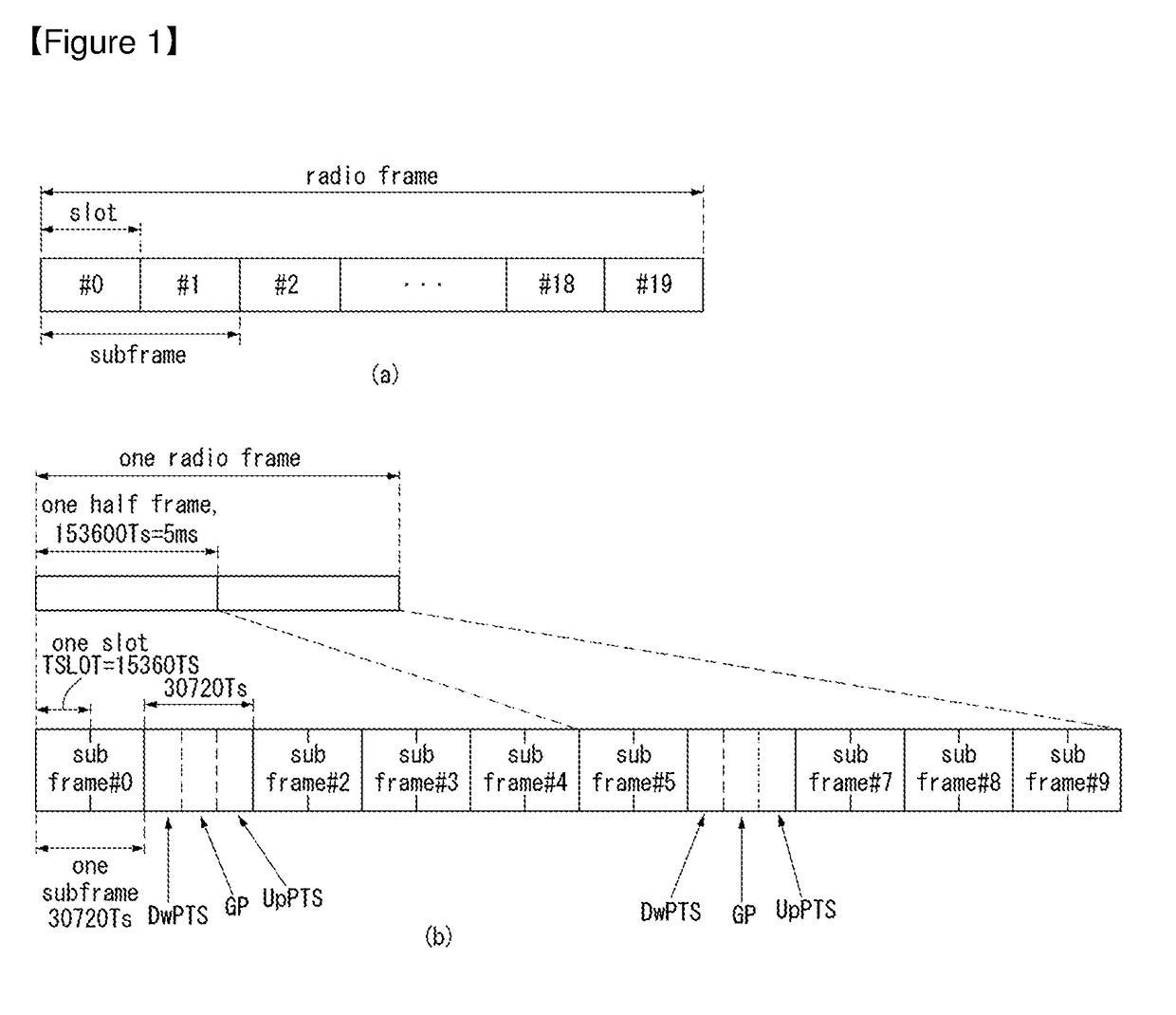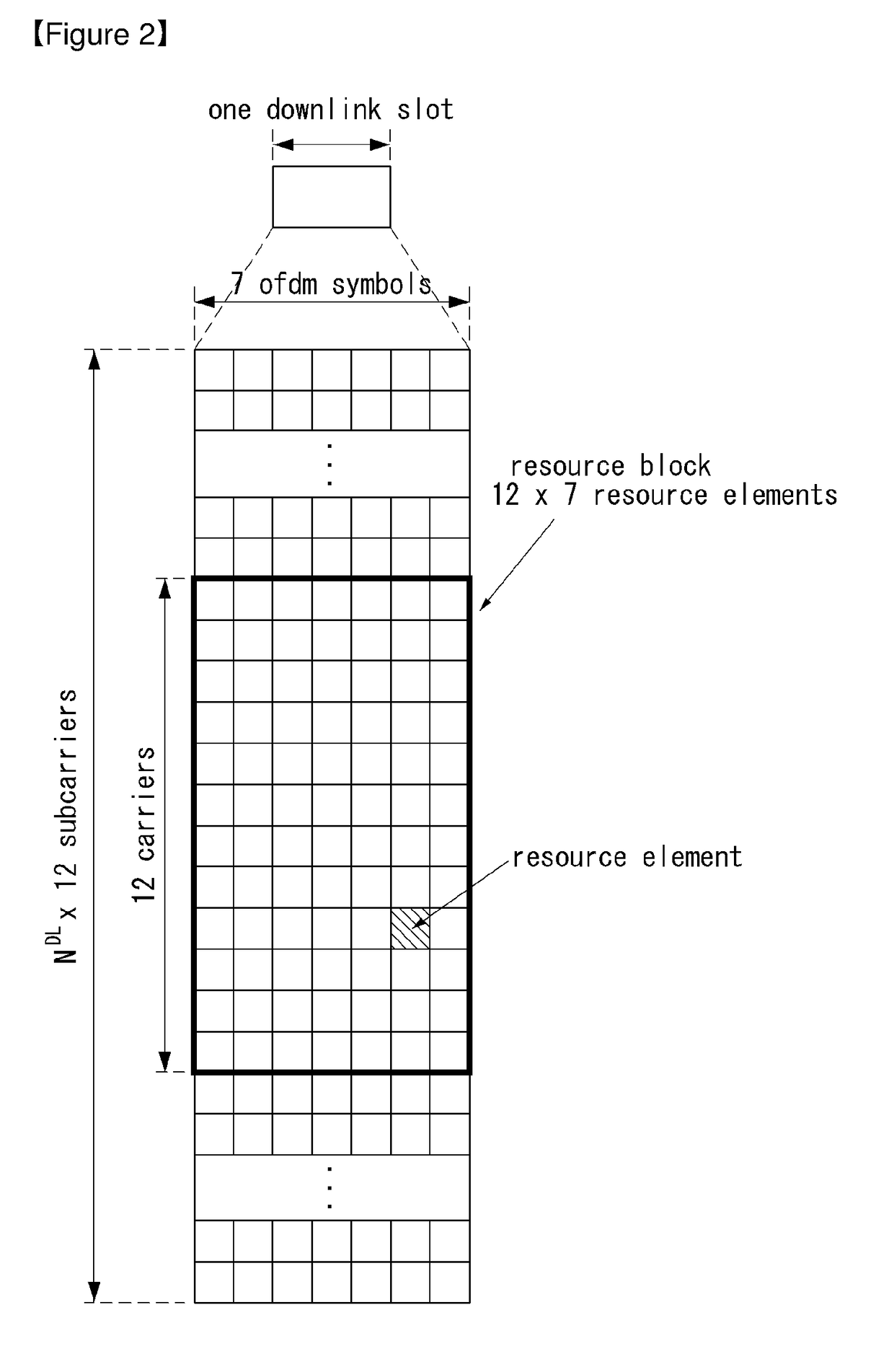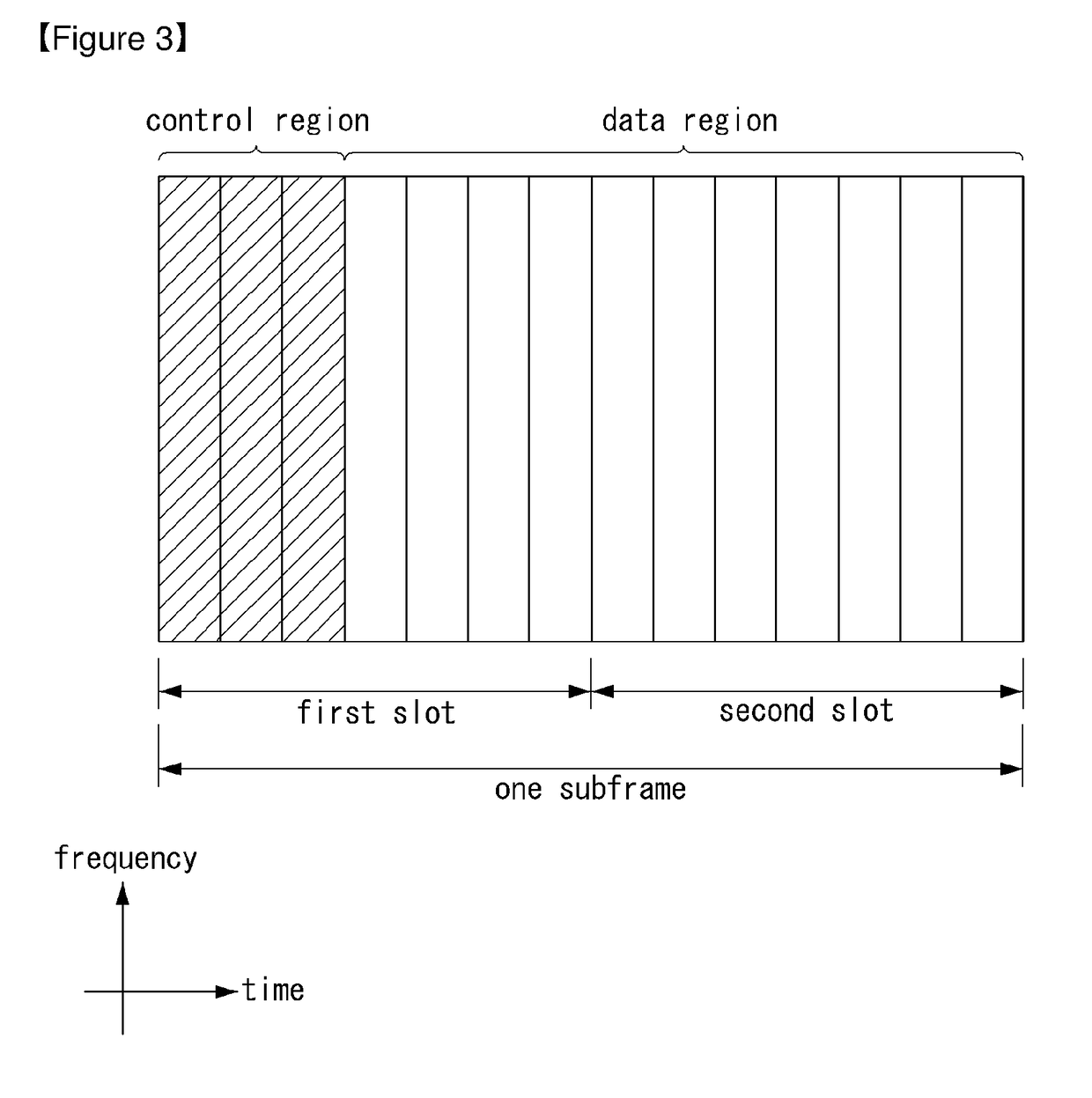Method for transmitting dmrs in wireless communication system supporting nb-iot and apparatus therefor
a wireless communication system and reference signal technology, applied in the field of wireless communication system support, can solve problems such as shortening of resources, and achieve the effects of reducing inter-cell interference, reducing papr/cm, and reducing inter-cell interferen
- Summary
- Abstract
- Description
- Claims
- Application Information
AI Technical Summary
Benefits of technology
Problems solved by technology
Method used
Image
Examples
first embodiment
for NB-PUSCH Support of NB-IoT
[0445]The first embodiment provides contents for a DM-RS structure for supporting an NB-PUSCH in an NB-IoT (or NB-LTE) system.
[0446]In this case, the DM-RS structure includes the position of a DM-RS symbol in a slot, a subframe, a radio frame, a resource unit, etc.
[0447]Furthermore, in the NB-IoT system, a PUSCH may be used for the transmission of control information in addition to data.
[0448]In NB-PUSCH transmission, channel estimation may be performed using a DM-RS for coherent demodulation.
[0449]In NB-IoT, a DM-RS needs to be designed by taking into consideration coexistence with a legacy LTE system for supporting an inband scenario (or inband mode).
[0450]In particular, if an NB-IoT system operates in the inband mode, the position of a DM-RS within a slot of NB-IoT needs to be designed to avoid a collision with a sounding reference signal (SRS) location of legacy LTE.
[0451]Furthermore, a subframe structure of NB-IoT may be the same as or different de...
second embodiment
ing DM-RS Sequence in NB-IoT
[0535]The second embodiment provides a method of generating a DM-RS sequence for an NB-PUSCH in an NB-IoT system.
[0536]Uplink transmission of NB-IoT supports two modulation methods, that is, π / 2-BPSK and π / 4-QPSK, in order to support single tone transmission.
[0537]Accordingly, uplink transmission of NB-IoT requires the design of a DM-RS sequence for supporting two different transmission modes (single tone transmission of a π / 2-BPSK modulation method and single tone transmission of a π / 4-QPSK modulation method).
[0538]In this case, in the case of single tone transmission of NB-IoT, the size of a base resource unit (RU) includes a total of 8 subframes.
[0539]In NB-IoT, one subframe includes 2 slots, and the base RU may include 16 slots.
[0540]If a DM-RS sequence is mapped in the time axis, the length of an available DM-RS sequence is restricted to 16.
[0541]Accordingly, a ZC-sequence may not be useful for use of a DM-RS sequence.
[0542]Furthermore, since NB-IoT ...
third embodiment
tion Method
[0722]Next, the third embodiment provides a method of configuring an initial phase in order to support single tone transmission in NB-IoT uplink using π / 2-BPSK and π / 4-QPSK.
[0723]In this case, in order to use both π / 2-BPSK modulation and π / 4-QPSK modulation, a wireless communication system needs to identically provide both a transmitter and receiver with information regarding that the start point of a phase rotation uses which phase.
[0724]This is contents corresponding to both a data symbol and a DM-RS symbol.
[0725]Accordingly, a base station needs to determine a method of determining that the symbol of timing when (data or DM-RS) transmission starts uses which phase and a method regarding that an initial phase must be initialized in which cycle and to share them with a terminal.
[0726]In this case, the determination of the initial phase (for a data symbol or DM-RS symbol) may occur in unit of each resource unit, and may include a set unit of a frame, subframe, slot, etc. ...
PUM
 Login to View More
Login to View More Abstract
Description
Claims
Application Information
 Login to View More
Login to View More - R&D
- Intellectual Property
- Life Sciences
- Materials
- Tech Scout
- Unparalleled Data Quality
- Higher Quality Content
- 60% Fewer Hallucinations
Browse by: Latest US Patents, China's latest patents, Technical Efficacy Thesaurus, Application Domain, Technology Topic, Popular Technical Reports.
© 2025 PatSnap. All rights reserved.Legal|Privacy policy|Modern Slavery Act Transparency Statement|Sitemap|About US| Contact US: help@patsnap.com



